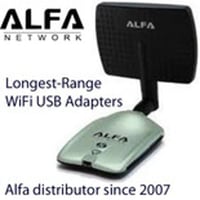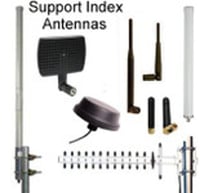IPEX Cables & Adapters
IPEX Connectors for Antenna Cables: Applications in IoT and Wireless Technologies
IPEX connectors are micro coaxial connectors widely used for RF (Radio Frequency) applications in various wireless and IoT (Internet of Things) systems. Their compact size makes them highly suitable for space-constrained devices like smartphones, tablets, laptops, and many embedded systems, especially in the realm of wireless communications. In this article, we’ll explore the technical aspects of IPEX connectors, their applications, and their role in different wireless technologies and IoT.

What Are IPEX Connectors?
IPEX connectors are small, high-frequency connectors used primarily to connect antenna cables to PCB (Printed Circuit Board) modules. These connectors are designed to operate in the RF spectrum, typically between 0 to 6 GHz, making them suitable for a wide range of wireless protocols and applications.
One of the defining features of IPEX connectors is their micro-miniature design, which allows for easy integration into devices where space is at a premium. They are commonly used for applications that require a detachable antenna or where routing an antenna within a device is necessary.
Key Applications of IPEX Connectors
-
Smartphones, Tablets, and Laptops IPEX connectors are widely used in mobile devices to connect internal antennas for cellular, Wi-Fi, GPS, Bluetooth, and NFC (Near-Field Communication) modules. Their compact size allows for efficient use of space, and their ability to handle high-frequency signals makes them ideal for ensuring strong wireless connectivity in mobile electronics.
-
IoT Devices In the burgeoning field of IoT, space efficiency is often critical as many devices are compact and need to support wireless communications. IPEX connectors are integral to IoT devices, enabling them to connect wirelessly via protocols like Wi-Fi, LoRa, Zigbee, and Bluetooth. These connectors are used to attach external antennas that enhance the signal range, making them a key component for IoT applications like smart homes, smart cities, and industrial automation.
-
Wireless Routers and Access Points Wi-Fi routers and access points use IPEX connectors to interface internal antennas with the wireless communication modules. In higher-end models, external antennas are often detachable, connected via IPEX, allowing for customization based on specific network requirements or environmental challenges.
-
Drones, Wearables, and Other Embedded Systems The lightweight and small form factor of IPEX connectors make them suitable for drones and wearables, which require wireless communication for remote control and data transmission. These connectors are often paired with GPS, Wi-Fi, or proprietary RF systems to ensure continuous connectivity.
-
GPS and GNSS Applications GPS modules in consumer devices, automotive systems, and asset trackers frequently employ IPEX connectors to ensure reliable signal transmission from antennas. The small size of these connectors makes them especially useful in compact GPS modules designed for IoT and portable systems.
Wireless Protocols and Frequency Bands for IPEX Connectors
IPEX connectors support a wide range of wireless protocols across various frequency bands:
-
Wi-Fi (2.4 GHz and 5 GHz) Most Wi-Fi-enabled devices use IPEX connectors to link to antennas. The 2.4 GHz and 5 GHz frequency bands are typical for Wi-Fi communication. The connectors ensure optimal signal strength for high-speed data transmission.
-
Bluetooth (2.4 GHz) Bluetooth operates in the 2.4 GHz ISM (Industrial, Scientific, and Medical) band. IPEX connectors are often used in Bluetooth-enabled devices, especially where external or internal antennas need to be connected without taking up much space.
-
Cellular (2G, 3G, 4G, and 5G) Cellular communication in mobile devices operates across several frequency bands, typically between 700 MHz and 6 GHz, depending on the network generation (e.g., 4G LTE, 5G NR). IPEX connectors allow these devices to connect internal or external antennas, ensuring optimal performance even in challenging environments.
-
LoRa (433 MHz, 868 MHz, 915 MHz) Low-power wide-area network (LPWAN) protocols like LoRa use IPEX connectors in IoT devices to attach antennas that operate in frequency bands like 433 MHz (Asia), 868 MHz (Europe), and 915 MHz (North America). These connectors help IoT devices maintain long-range communication while consuming minimal power.
-
Zigbee (2.4 GHz) Zigbee is another IoT protocol that typically operates in the 2.4 GHz frequency band. Devices using Zigbee for mesh networking often employ IPEX connectors to interface with internal or external antennas.
-
GPS/GNSS (1.57542 GHz for L1 Band) IPEX connectors are often used in GPS and GNSS modules to attach antennas that operate at specific frequency bands like the L1 band (1.57542 GHz). Their design ensures minimal signal loss, which is crucial for accurate location tracking.
Advantages of IPEX Connectors
- Compact Size: IPEX connectors are extremely small, making them ideal for applications where space is at a premium, such as wearables and mobile devices.
- High-Frequency Capability: With support for frequencies up to 6 GHz, these connectors are suitable for a wide range of wireless communication protocols.
- Low Signal Loss: IPEX connectors are designed to minimize signal loss and interference, ensuring optimal performance for wireless applications.
- Ease of Use: These connectors are easy to install and replace, which is beneficial in devices that may require antenna upgrades or replacements over time.
Considerations for Using IPEX Connectors
While IPEX connectors offer many benefits, there are a few considerations to keep in mind:
- Durability: These connectors are small and delicate, meaning that they can be prone to wear and damage if repeatedly connected and disconnected.
- Connection Stability: Due to their size, IPEX connectors may require additional mechanical stability, such as glue or locking mechanisms, to ensure they remain securely connected in high-vibration environments (e.g., drones or automotive applications).
Conclusion
IPEX connectors are an essential component in modern wireless communication systems, particularly for space-constrained devices that require reliable RF performance. From smartphones and IoT devices to Wi-Fi routers and GPS modules, their compact size and versatility make them a preferred choice for antenna connections across numerous protocols and frequency bands. As wireless technology continues to advance, IPEX connectors will remain crucial in ensuring strong, stable connections in ever-smaller devices and applications.





